Paintings for Mental Health
Struggling with mental health issues can be a difficult and isolating experience. However, there are many ways to promote mental wellbeing, including therapy and self-care practices.
One powerful tool that is often overlooked is art. Paintings for mental health can have a significant positive impact on your emotional state and overall wellbeing.
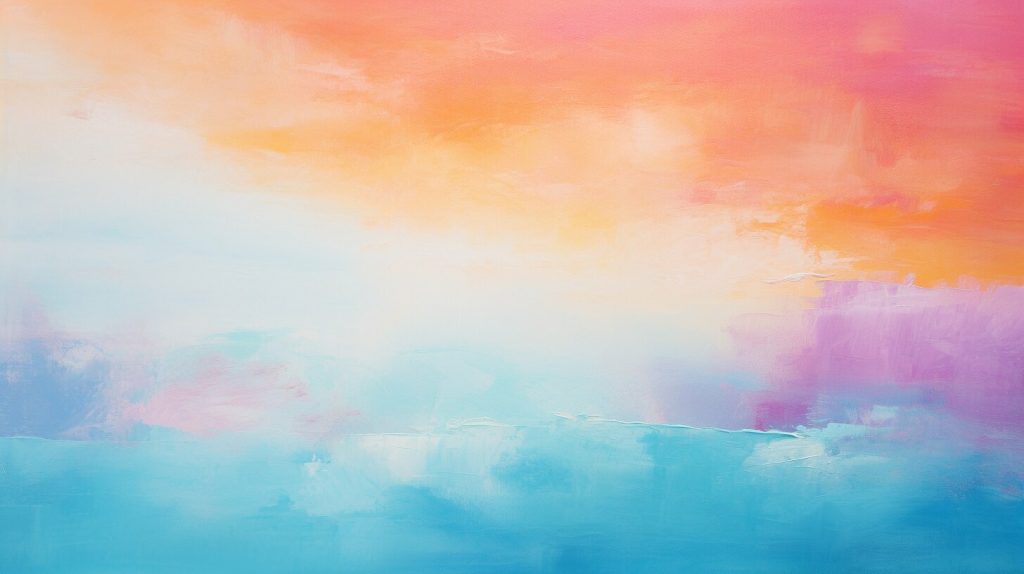
Artwork has a unique ability to evoke emotions and inspire introspection, making it an effective therapy tool.
Whether you’re an artist or appreciate art, incorporating paintings into your self-care routine can be a game changer.
In this article, we’ll explore the power of art for mental health and provide practical tips for using paintings to boost your wellbeing.
Key Takeaways:
- Paintings can have a positive impact on mental health and wellbeing.
- Artwork inspires and serves as a form of therapy.
- Paintings can depict emotions and serve as a therapeutic tool.
- Art therapy is a powerful healing tool under a trained therapist’s guidance.
- Other art forms like photography, drawing, and poetry can also benefit mental health.
Understanding the Power of Art for Mental Health
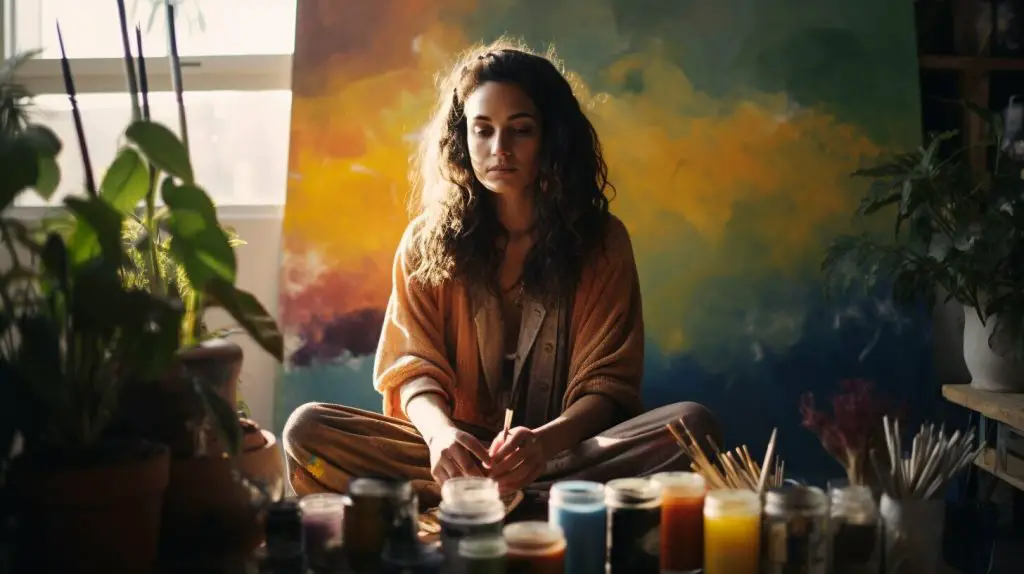
Art has the power to inspire, move, and transform us. It can also be a powerful therapy for those struggling with mental health.
Many works of art, whether painting, sculpture, or other forms, depict emotions and experiences that we can all relate to.
“I found I could say things with color and shapes that I couldn’t say any other way – things I had no words for.” – Georgia O’Keeffe.
Art can be a therapeutic tool for exploring and expressing emotions that may be difficult to put into words.
Through creating or viewing art, individuals can gain insight into their thoughts and feelings while experiencing a sense of catharsis and release.
Therapists often use art to help individuals cope with trauma, depression, anxiety, and other mental health struggles.
Whether through painting, drawing, or other forms of visual art, creating can serve as a form of self-care and stress relief.
In addition to its therapeutic benefits, art can be a source of inspiration and hope. For many, viewing a beautiful work of art can shift their mindset and help them see the world more positively.
Art as a Therapeutic Tool
The act of creating art can be therapeutic in and of itself. Studies have shown that engaging in art can reduce stress and anxiety levels while boosting mood and increasing feelings of wellbeing.
Creating art can also help to improve cognitive skills, such as problem-solving and critical thinking.
This can be particularly beneficial for those who struggle with mental health conditions, as it can provide a sense of accomplishment and help to build confidence.
Through creating art, individuals can develop new coping skills and learn to manage difficult emotions healthily.
This can be especially helpful for those with depression, anxiety, and other conditions.
Overall, the power of art in promoting mental health cannot be overstated. Whether through creating or viewing art, it can be a powerful form of therapy and self-care.
The Role of Paintings in Mental Health
Paintings have a powerful role to play in mental health. They can depict emotions that are hard to describe, and their therapeutic benefits have been recognized throughout history.
Many therapists use painting to help their clients express themselves and work through difficult emotions. When words fail us, paintings can provide a way to cope with mental health struggles.
| Benefits of Paintings for Mental Health: | Examples: |
|---|---|
| 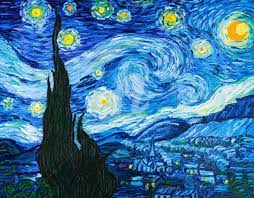 The Starry Night by Vincent van Gogh is a famous example of a painting that reflects the artist’s struggles with mental illness. |
Paintings can inspire individuals to develop a more positive mindset and practice self-love.
For example, hanging a painting in your home that reflects a favorite memory or evokes feelings of happiness can help create a more positive environment.
Overall, paintings can positively impact mental health, whether used in therapy or daily life as a tool for relaxation and self-expression.
Historical Examples: Vincent van Gogh’s Art and Mental Health
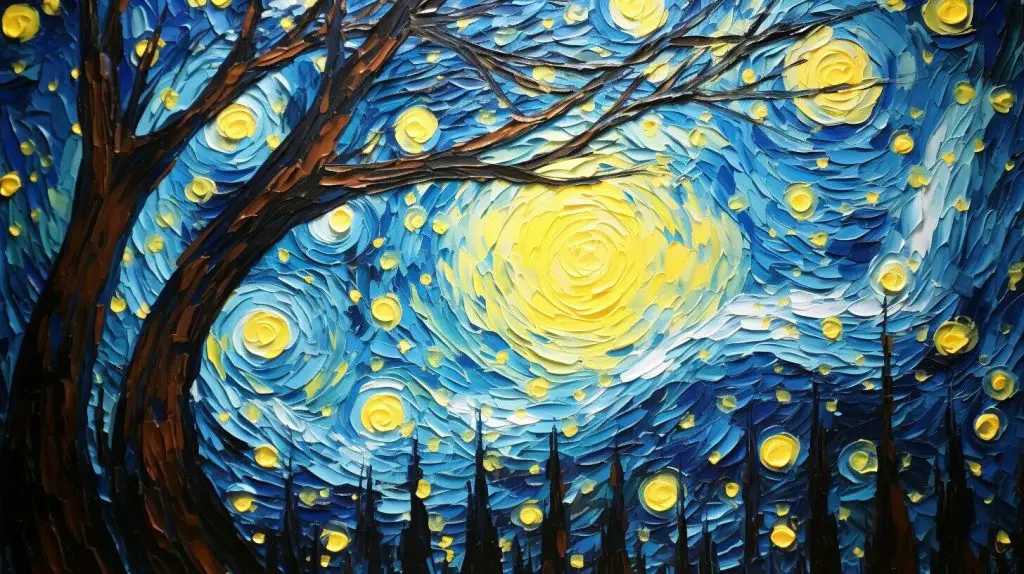
Vincent van Gogh is one of the most famous artists in history, known for his vivid and emotionally charged paintings.
However, many people don’t know that van Gogh struggled with mental illness, and his art reflected his innermost thoughts and emotions.
Van Gogh was diagnosed with bipolar disorder and spent time in psychiatric hospitals, where he continued to paint.
His works often depicted his struggles with depression, anxiety, and loneliness, as well as his love for nature and the beauty he saw in the world around him.
One of his most well-known works, The Starry Night, is a prime example of how his emotions were conveyed through his art.
The painting depicts a nighttime landscape with swirling stars and a bright moon, but the brushstrokes and colors are incredibly expressive and seem to convey a sense of turmoil and chaos.
While van Gogh’s mental illness undoubtedly caused him a great deal of pain and struggle, his art also brought him solace and a way to express his emotions.
Today, his paintings are celebrated as works of art and as a window into the mind of a brilliant and troubled artist.
Incorporating Art into Daily Life: Tips for Mental Wellbeing
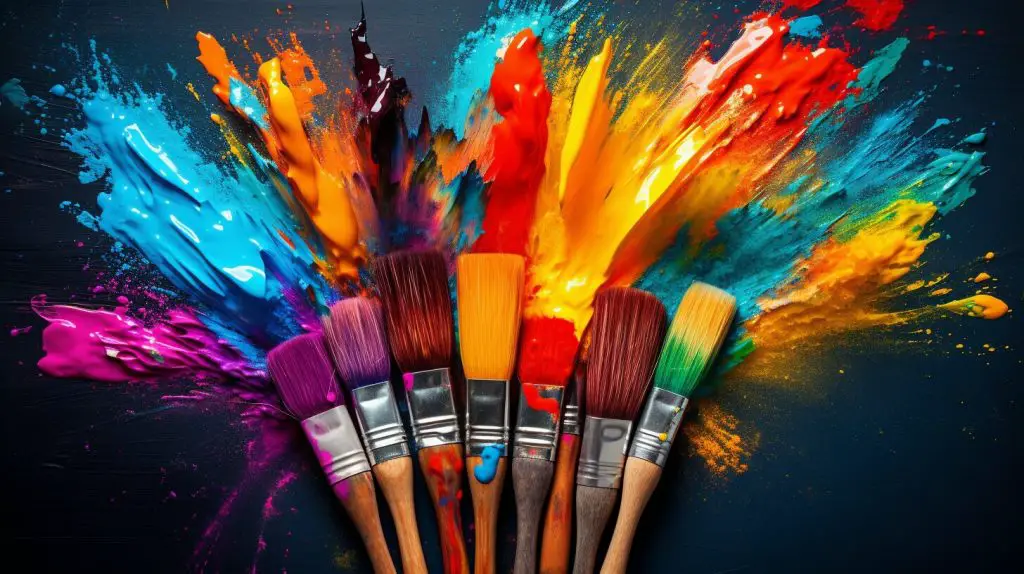
Now that we understand the power of art and its role in mental health, let’s explore some practical tips on incorporating art into our daily lives.
These tips can inspire creativity and develop a positive mindset, positively impacting our mental wellbeing.
1. Start with a small project
Begin with a small project that can be completed quickly, such as a sketch, a photograph, or a short poem. This can help build confidence and motivation to continue exploring different art forms.
2. Use art as a form of therapy
Use art as a form of therapy to express your emotions or cope with mental health struggles. Experiment with different mediums and allow yourself to create without judgment or expectation.
3. Practice self-love through art
Use art as a form of self-love and self-care. Create something that represents a positive affirmation or a personal mantra. Hang it in a place where you can see it daily as a reminder to love and care for yourself.
4. Attend an art class or workshop
Attend an art class or workshop to learn new techniques and meet like-minded individuals. This can provide a sense of community and social support, positively impacting mental wellbeing.
5. Consider incorporating art into your mindfulness practice
Consider incorporating art into your mindfulness practice, such as a coloring book or a guided art meditation. This can help cultivate a sense of calmness and relaxation, reducing stress and anxiety.
Remember, the goal is not to create a masterpiece but to use art as a tool for mental wellbeing. Experiment with different art forms, find what resonates with you, and enjoy the experience!
The Therapeutic Benefits of Art: Expressing and Coping with Emotions
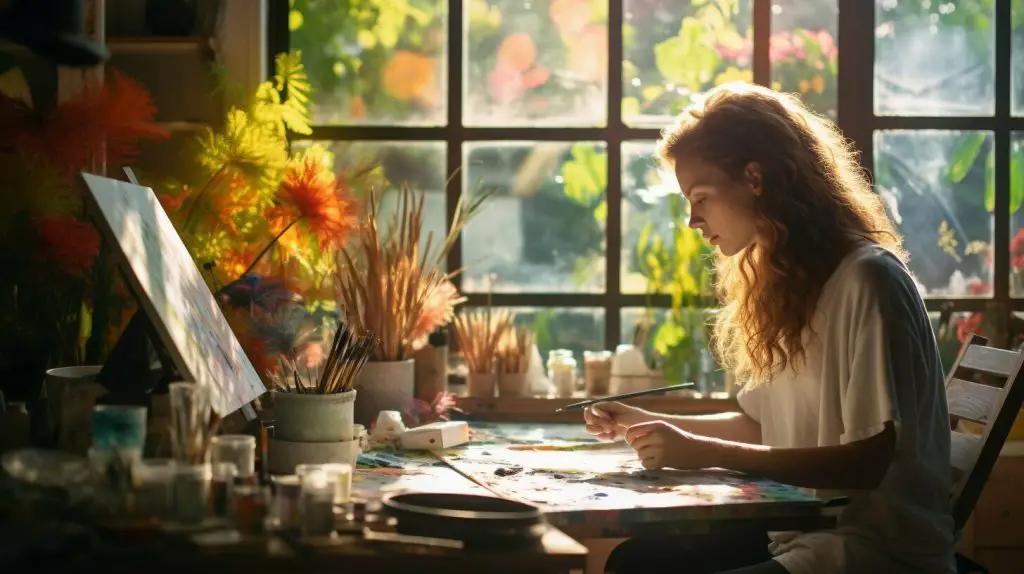
Art can express emotions that are difficult to put into words. It can help individuals cope with feelings of depression, anxiety, and other mental health struggles.
Through art, individuals can explore and express their emotions safely and creatively.
Creating can be therapeutic, whether painting, drawing, photography, or any other art form.
It allows individuals to experience various emotions, from the joy of inspiration to the healing power of self-expression.
Art allows individuals to communicate their feelings without the need for words. This can be especially helpful for individuals who struggle with verbal communication or have difficulty expressing their emotions.
Art therapy provides a safe environment for individuals to explore their feelings and work through any emotional blocks that may hold them back.
The process of creating art, rather than focusing on producing a perfect finished product, can be a tool for mindfulness and self-care.
By engaging in art, individuals can develop a better sense of self-awareness, self-expression and self-love, positively impacting their mental health.
Art therapy can help individuals learn coping skills and build resilience, improving their mental wellbeing.
Art can also be a source of inspiration and motivation, inspiring individuals to pursue a meaningful and fulfilling life.
Using Art as a Form of Self-Care
Self-care is an important aspect of maintaining good mental health. Art can be a powerful tool for self-care, allowing individuals to express themselves and relieve stress through creativity.
Making time for creative expression can help individuals build coping skills and develop a positive mindset.
Whether setting aside time each day to draw or paint or attending an art therapy session, incorporating art into daily life can be a valuable addition to any self-care routine.
Through art, individuals can explore their emotions and connect with their inner selves meaningfully.
By embracing the therapeutic benefits of art, individuals can improve their mental wellbeing and enjoy a more fulfilling life.
Art Therapy: A Powerful Tool for Healing
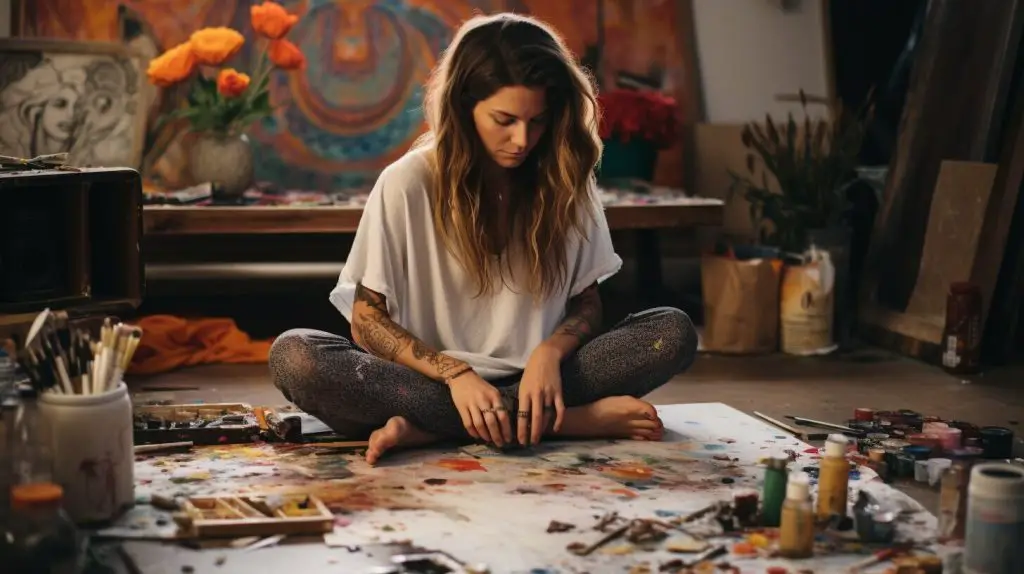
While incorporating art into daily life can have numerous benefits for mental wellbeing, sometimes deeper issues require the guidance of a trained therapist.
This is where art therapy comes in as a powerful tool for healing.
Art therapy involves using art as a form of communication, allowing individuals to express and process emotions that may be difficult to articulate through words alone.
Through creating artwork, individuals can explore their inner thoughts and feelings, gaining insight into their behaviors and patterns.
This can be particularly effective for those struggling with depression, anxiety, trauma, and other mental health conditions.
Art therapists are trained to guide individuals through art-making, encouraging them to reflect on their work and facilitating discussion around their emotions and experiences.
Art therapy can help individuals work through difficult experiences and develop coping mechanisms by providing a safe space for self-expression and exploration.
For those interested in pursuing art therapy, seeking a licensed and trained therapist with experience in this field is essential.
Together, you can work towards healing and growth through the power of artistic expression.
Exploring Other Art Forms for Mental Health: Photography, Drawing, and Poetry

While paintings are a beautiful and therapeutic art form, they are not the only way to promote mental wellbeing through art.
Photography, drawing, and poetry are other ways to express and cope with emotions.
Photography: Photography can be a powerful tool for capturing and reflecting emotions. Whether it’s taking pictures of nature, loved ones, or personal experiences, photography can provide a sense of mindfulness and help individuals focus on the present moment.
Drawing: Drawing can be a great way to release emotions and reduce stress. It doesn’t have to be a masterpiece; even simple sketches or doodles can promote mental wellbeing. Drawing can also be a meditation, allowing individuals to clear their minds and focus on the present moment.
Poetry: Poetry is a form of self-expression that can be a powerful outlet for emotions. Whether writing about personal experiences, feelings, or observations, poetry can help individuals make sense of their emotions and find meaning in their struggles. Poetry can also provide a sense of catharsis and help individuals cope with difficult emotions.
Exploring different art forms can help individuals find the best way to express themselves and promote their mental wellbeing.
Whether it’s painting, photography, drawing, or poetry, the therapeutic benefits of art are endless.
Art and Mental Health: Addressing Specific Conditions
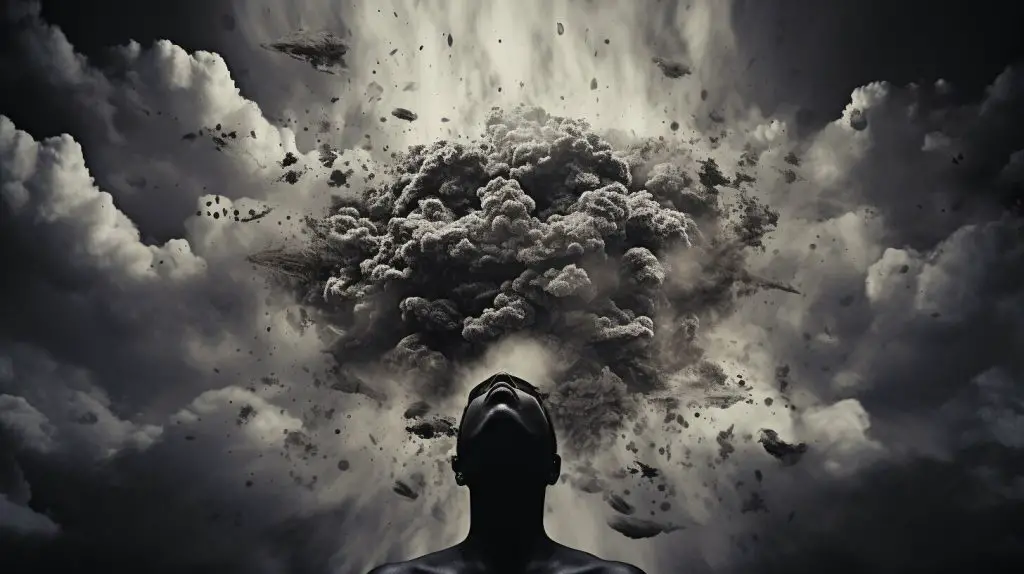
Art has been shown to positively impact various mental health conditions, including bipolar disorder, suicidal thoughts, depression, PTSD, and the experiences of survivors.
It can serve as a therapeutic tool, providing a safe space for individuals to express their emotions and experiences.
| Condition | Artistic Approach |
|---|---|
| Bipolar Disorder | Creating art during manic episodes can help individuals with bipolar disorder channel their excess energy into a productive and positive outlet. On the other hand, art therapy during depressive episodes can help individuals express their emotions and alleviate feelings of hopelessness. |
| Suicidal Thoughts | Creating art can be a powerful tool for trauma survivors, providing a way to express their emotions and experiences. Art therapy can help individuals work through their trauma and develop positive coping mechanisms. |
| Depression | Creating art can be a powerful tool for survivors of trauma, providing a way to express their emotions and experiences. Art therapy can help individuals work through their trauma and develop positive coping mechanisms. |
| PTSD | Creating art can provide individuals with PTSD a means of processing and expressing their traumatic experiences in a safe, controlled environment. Art therapy can also help individuals develop coping mechanisms and reduce symptoms of PTSD. |
| Survivors | Creating art can be a powerful tool for trauma survivors, providing a way to express their emotions and experiences. Art therapy can help individuals work through their trauma and develop positive coping mechanisms. |
It’s important to note that art should not be used as a substitute for professional mental health treatment.
If you or someone you know is struggling with any mental health condition, it’s important to seek the guidance of a trained therapist or mental health professional.
The Importance of Color in Art for Mental Wellbeing
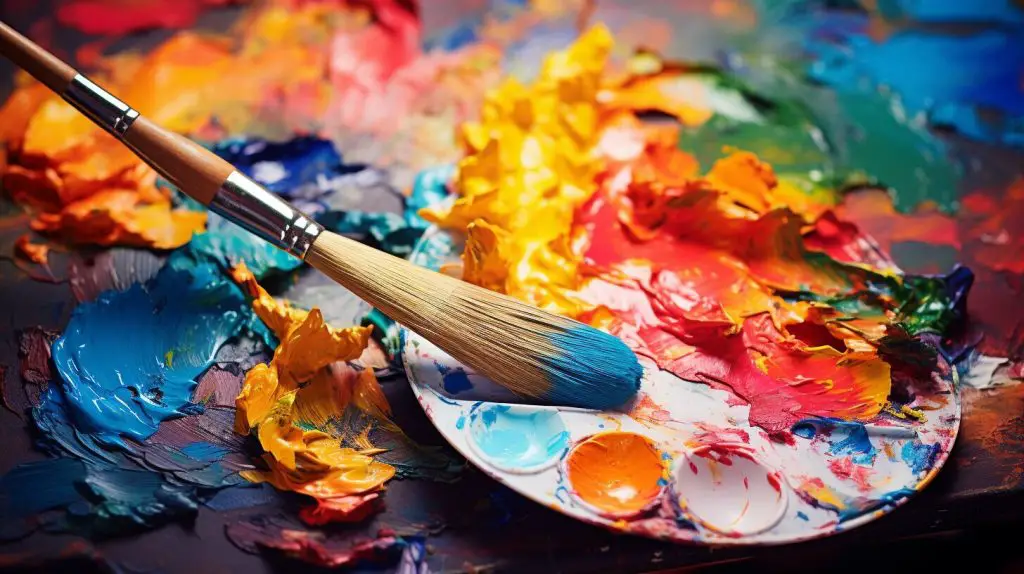
Color is an essential element in art that has the power to affect our moods and emotions. It can evoke happiness, sadness, calmness, or excitement and influence our behavior and perception of the world.
Understanding the therapeutic benefits of color in art can help us incorporate it into our daily lives for improved mental wellbeing.
- Warm colors like red, orange, and yellow are associated with energy, passion, and enthusiasm. They can stimulate the senses and create a sense of warmth and intimacy. These colors are particularly helpful in promoting motivation, creativity, and positivity.
- Cool colors, on the other hand, such as blue, green, and purple, are associated with calmness and relaxation. They can create a sense of tranquility and help us feel more centered and grounded. These colors are particularly helpful in promoting a sense of peace and serenity.
- Neutral colors like beige, gray, and white can evoke a sense of simplicity and elegance. These colors can help us feel more organized and focused, and provide a sense of balance and harmony. They are particularly helpful in promoting a sense of calmness and stability in our daily lives.
When choosing artwork to promote mental wellbeing, it is important to consider the colors used in the piece.
Art primarily composed of warm or cool colors can significantly impact our mood and emotions and can even be used as a form of therapy.
Whether through painting, drawing, or photography, incorporating color into our lives is an effective way to promote self-care and improve our mental wellbeing.
Final Thoughts on Paintings for Mental Health
Paintings for mental health have the power to inspire, heal, and promote mental wellbeing.
Art forms such as paintings, photography, poetry and drawing can be therapeutic tools to cope with emotions, address specific mental health conditions, and promote self-care.
Through the vibrant colors of a painting or the expressive lines of a drawing, art can evoke emotions and promote a positive mindset.
By incorporating art into our daily lives, we can enhance our mental wellbeing and find new ways to express ourselves.
While art can be a powerful tool for healing, it is essential to remember that seeking professional help from a trained therapist may be necessary for those struggling with severe mental health conditions.
Art therapy, under the guidance of a therapist, can be an effective treatment for trauma and other mental health struggles.
As we explore the connection between art and mental health, remember that self-expression and self-care are vital to maintaining our overall wellbeing.
FAQs About Paintings for Mental Health
How can paintings boost mental wellbeing?
Paintings can boost mental wellbeing by providing a form of therapy, allowing individuals to express their emotions and find inspiration in works of art.
What is the role of paintings in mental health?
Paintings can play a significant role in mental health by depicting emotions as a therapeutic tool and helping individuals explore and cope with their feelings.
Are there any historical examples of artists and mental health?
Vincent van Gogh is a notable example of an artist who struggled with mental illness, with his famous works reflecting his experiences and challenges.
How can art be incorporated into daily life for mental wellbeing?
Art can be incorporated into daily life for mental wellbeing by inspiring creativity, promoting a positive mindset, and encouraging self-expression and self-love.
What are the therapeutic benefits of art in coping with emotions?
Art has therapeutic benefits in expressing and coping with emotions, particularly related to depression, anxiety, and other mental health struggles.
What is art therapy and its role in healing?
Art therapy is a powerful tool for healing that involves the guidance of a trained therapist, helping individuals address trauma and find therapeutic support through artistic expression.
Can other art forms besides paintings benefit mental health?
Yes, other art forms such as photography, drawing, and poetry can also benefit mental health, offering unique ways of expression and emotional exploration.
How can art be used to address specific mental health conditions?
Art can be used to address specific mental health conditions such as bipolar disorder, suicidal thoughts, depression, PTSD, and the experiences of survivors, providing an outlet for healing and self-expression.
What is the importance of color in art for mental wellbeing?
Color plays a significant role in art for mental wellbeing, as different colors can evoke specific emotions and contribute to self-care practices.
References:
- “Art For Self-Care and Mental Health.” Copyright (C) 2023 University of Washington, 11 Apr. 2022, thewholeu.uw.edu/2022/04/11/art-for-self-care-and-mental-health.
- Shukla, Apoorva, et al. “Role of Art Therapy in the Promotion of Mental Health: A Critical Review.” Cureus, Cureus, Inc., 15 Aug. 2022, https://doi.org/10.7759/cureus.28026.
- “10 Pros and Cons of Being an Art Therapist (Plus Salary).” Indeed.com, 4 Jan. 2023, www.indeed.com/career-advice/finding-a-job/pros-and-cons-of-being-art-therapist.
- Outreach. “Can Art Therapy Relieve Stress? | Sage Neuroscience Center.” Sage Neuroscience Center, 29 July 2022, sageclinic.org/blog/art-relieve-stress.
- Voyce, Project. “Using Art as a Coping Mechanism — Project VOYCE.” Project VOYCE, 19 July 2021, www.projectvoyce.org/pvblog/2021/7/19/using-art-as-a-coping-mechanism.
- “How Arts Can Help Improve Your Mental Health.” Mental Health Foundation, www.mentalhealth.org.uk/explore-mental-health/blogs/how-arts-can-help-improve-your-mental-health.
- Nash, Jo. “Expressive Arts Therapy: 15 Creative Activities and Techniques.” PositivePsychology.com, 6 July 2023, positivepsychology.com/expressive-arts-therapy.
- “Vincent Van Gogh.” Van Gogh Museum, www.vangoghmuseum.nl/en/art-and-stories/art/vincent-van-gogh.
- PsyD, John M. Grohol. “Exploring Vincent Van Gogh’s Mental Health: Schizophrenia, Bipolar Disorder, or Another Condition?” Psych Central, 20 May 2022, psychcentral.com/adhd/did-vincent-van-gogh-have-bipolar-disorder-or-schizophrenia.
- Writers, Staff. “What Is Art Therapy? | Psychology.org.” Psychology.org | Psychology’s Comprehensive Online Resource, 11 July 2023, www.psychology.org/resources/what-is-art-therapy.
- “Bipolar Disorder – Symptoms and Causes – Mayo Clinic.” Mayo Clinic, 13 Dec. 2022, www.mayoclinic.org/diseases-conditions/bipolar-disorder/symptoms-causes/syc-20355955.
- “Suicidal Thoughts: What Is It, Symptoms and Treatment | Top Doctors.” Top Doctors, 4 May 2018, www.topdoctors.co.uk/medical-dictionary/suicidal-thoughts.
- “What Is Depression?” UNICEF Parenting, www.unicef.org/parenting/mental-health/what-is-depression?gclid=Cj0KCQjwoeemBhCfARIsADR2QCvdfIom6n6vvSr2CVAZ5RVu1Y1z1Wj3LVDkgAyWTYXu2tkS1IwUnjgaAmYfEALw_wcB.
- What Is Posttraumatic Stress Disorder (PTSD)? www.psychiatry.org/patients-families/ptsd/what-is-ptsd.




Leave a Reply